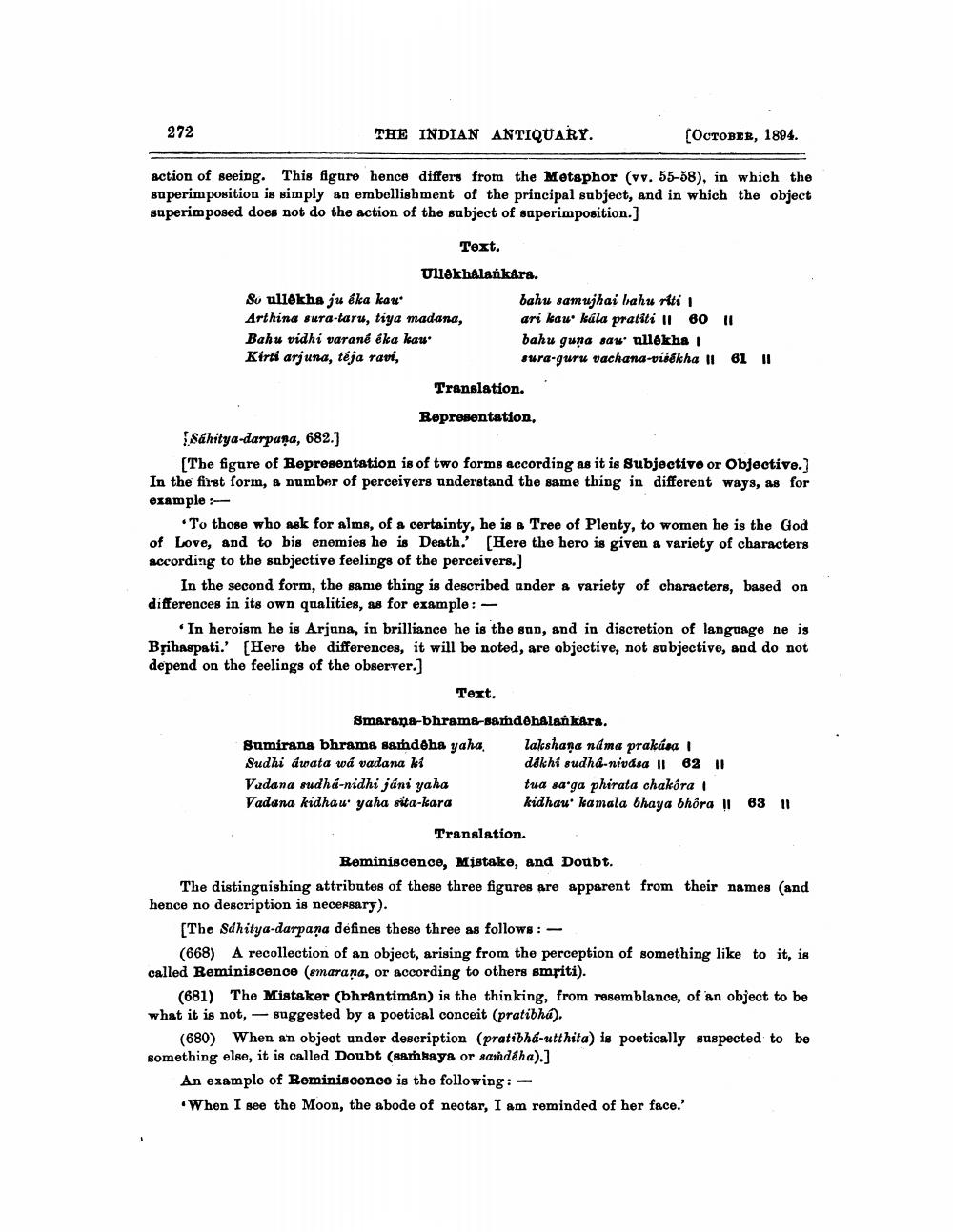________________
272
THE INDIAN ANTIQUARY.
(OCTOBER, 1894.
action of seeing. This figure hence differs from the Metaphor (vv. 55-58), in which the superimposition is simply an embellishment of the principal subject, and in which the object superimposed does not do the action of the subject of saperimposition.)
Text.
UllekhAlankara. Su ullekha ju éka kau
bahu samujhai bahu riti Arthina sura-taru, tiya madana, ari kau. kála pratiti II 8011 Bahu vidhi varané éka kau
bahu guna sau ullekha Kirti arjuna, téja ravi,
sura-guru vachana-vibékha 11 61 II
Translation,
Representation, Sahitya-darpana, 682.)
[The figure of Representation is of two forms according as it is subjective or Objective.) In the first form, a number of perceivers understand the same thing in different ways, as for example :
.To those who ask for alma, of a certainty, he is a Tree of Plenty, to women he is the God of Love, and to bis enemies he is Death' (Here the hero is given a variety of characters according to the subjective feelings of the perceivers.]
In the second form, the same thing is described under & variety of characters, based on differences in its own qualities, as for example:
In heroism he is Arjana, in brilliance he is the son, and in discretion of language ne is Bțihaspati.' (Here the differences, it will be noted, are abjective, not subjective, and do not depend on the feelings of the observer.]
Text. Smarana-bhrama-samdhAlankara. Sumirana bhrama sandeha yaha. lakshana ndma prakása Sudhi đuata wá vadana ki
dékhí sudha-nivasa II 82 11 Vadana sudha-nidhi jáni yaha
tua sa ga phirata chakóra Vadana kidhau' yaha sita-kara
kidhau. kamala bhaya bhora !! 83 11
Translation.
Reminiscence, Mistake, and Doubt. The distinguishing attributes of these three figures are apparent from their names (and hence no description is necessary).
[The Sahitya-darpana defines these three as follows:
(668) A recollection of an object, arising from the perception of something like to it, is called Reminiscence (smarana, or according to others smfiti).
(681) The Mistaker (bhrantiman) is the thinking, from resemblance, of an object to be what it is not, - suggested by a poetical conceit (pratibha).
(680) When an object under description (pratibha-utthita) is poetically suspected to be something else, it is called Doubt (sambaya or sandéha).]
An example of Reminiscence is the following: - When I see the Moon, the abode of neotar, I am reminded of her face.'




